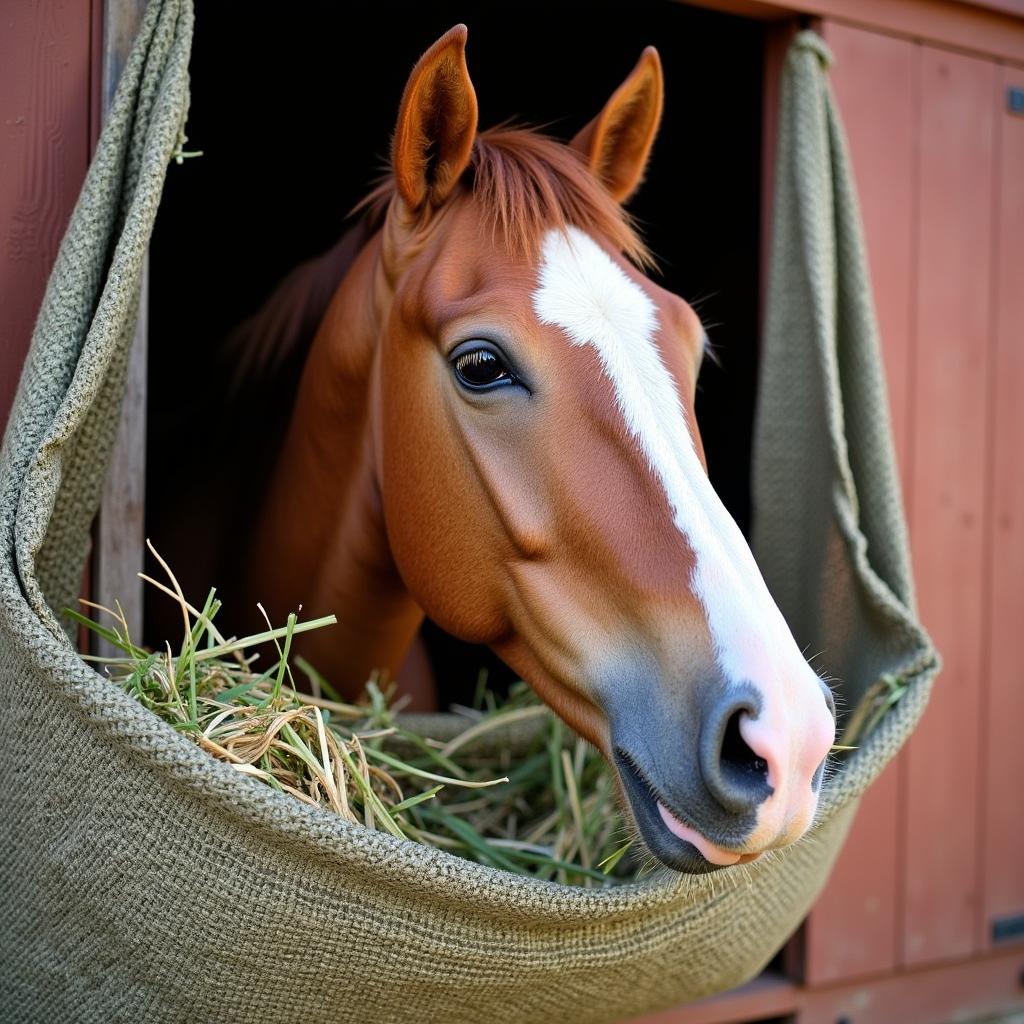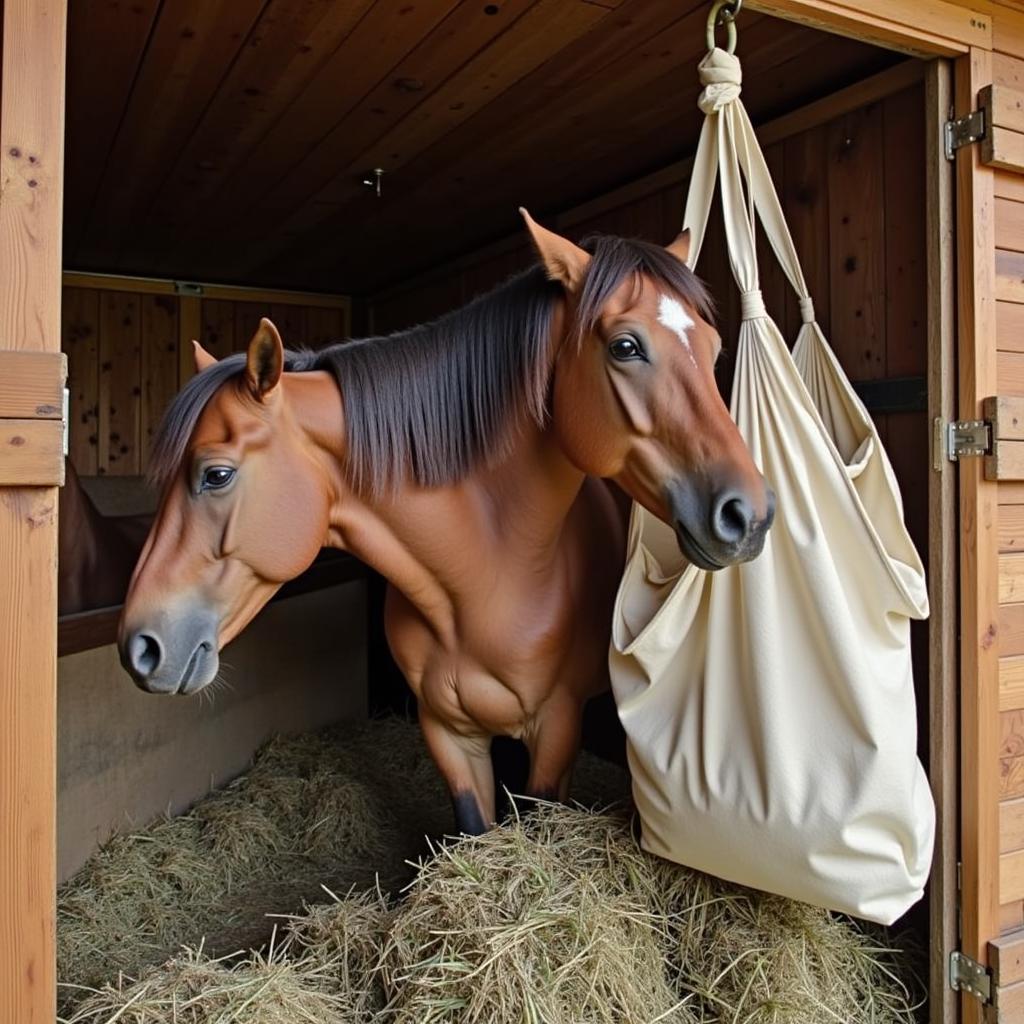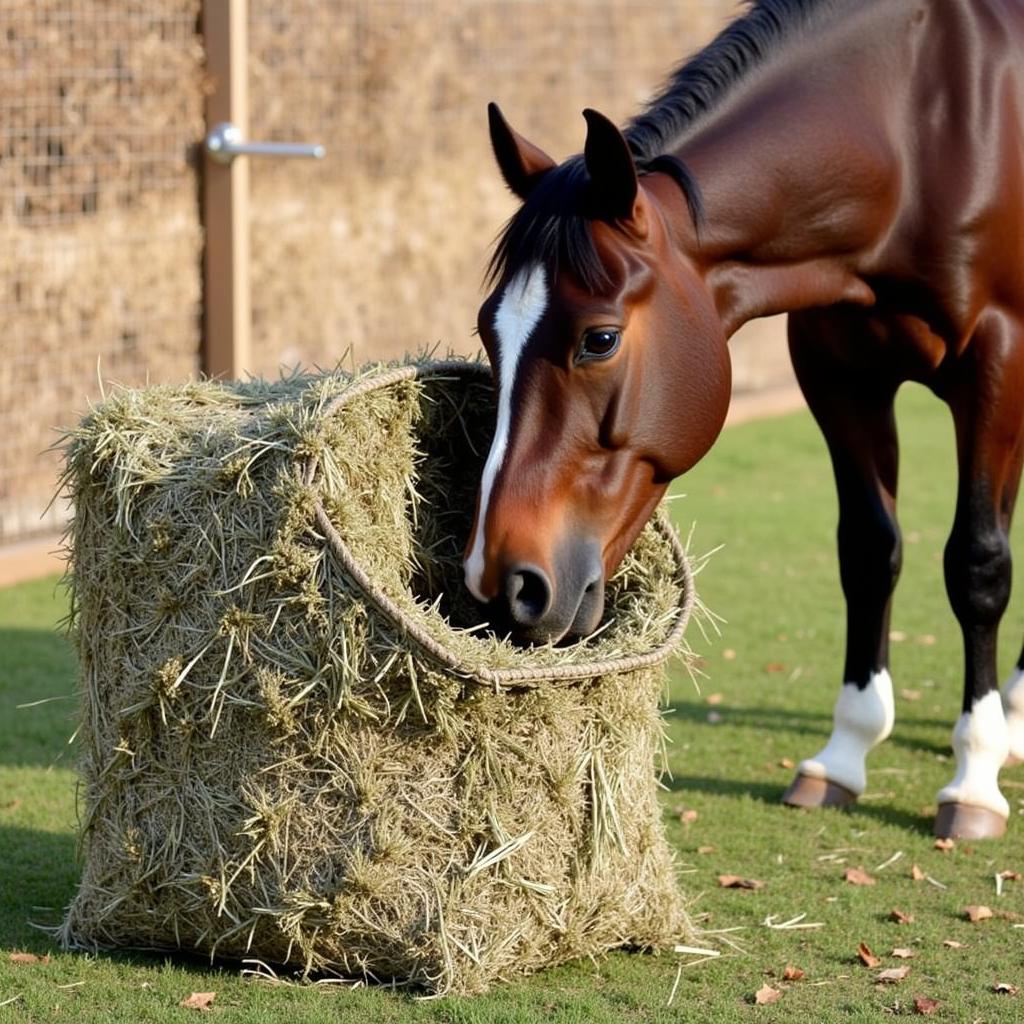Horse Hay Bags are a convenient and efficient way to feed your horse, especially if you’re on the go or need a hands-free option. They come in various sizes and styles, offering flexibility to suit your needs. But with so many options available, choosing the right hay bag for your horse can feel overwhelming.
This guide will walk you through everything you need to know about horse hay bags, from understanding the different types and sizes to choosing the best one for your equine friend. We’ll also cover the benefits of using hay bags, safety tips to keep in mind, and practical tips for getting the most out of your purchase.
What Are Horse Hay Bags?
Horse hay bags, also known as hay nets, are mesh or fabric containers designed to hold hay and provide a slow-feeding method. They are typically made of durable materials like nylon, polyester, or canvas and come in various shapes, sizes, and designs.
Why Use a Hay Bag?
There are several benefits to using a horse hay bag:
- Slows Down Eating: Hay bags encourage horses to eat slowly, preventing them from gulping down large amounts of hay that could lead to digestive issues.
- Reduces Waste: By containing the hay, hay bags minimize waste, saving you money and reducing the risk of hay spoiling.
- Convenience: Hay bags offer a portable and convenient way to feed your horse, especially when you’re on the go or at events.
- Safety: Some hay bags, like those designed for travel or competitions, are designed to minimize the risk of your horse getting tangled or injured.
- Prevents Hay Spoiling: Hay bags protect hay from moisture and debris, keeping it fresh and preventing spoilage.
Different Types of Horse Hay Bags
Horse hay bags come in a wide range of styles and designs, each offering specific advantages. Here’s a breakdown of the most common types:
1. Mesh Hay Bags
Mesh hay bags are the most popular type, known for their durability, breathability, and ease of cleaning. They are made of tightly woven mesh that allows air circulation, preventing mold and mildew growth. Mesh bags are often preferred for their flexibility and ease of filling.

2. Canvas Hay Bags
Canvas hay bags are made of durable, heavy-duty canvas, offering superior protection against wear and tear. They tend to be more expensive than mesh bags but provide a more robust option for rugged use or harsher weather conditions.

3. Slow Feed Hay Bags
Slow feed hay bags are specially designed to provide a slower eating pace for horses prone to overeating or digestive issues. They feature smaller openings and more complex designs that require horses to work harder to get their food.

Choosing the Right Hay Bag
The best hay bag for your horse depends on several factors, including:
- Horse’s Size and Breed: Consider your horse’s size and eating habits. Smaller horses may need a smaller hay bag to prevent them from getting tangled, while larger horses might require a larger one.
- Feeding Frequency: If you feed your horse frequently, a smaller hay bag might be suitable. However, if you’re only feeding once a day, a larger bag might be necessary.
- Type of Hay: The type of hay you feed can also influence your choice. Some hay bags are better suited for certain types of hay, such as long-stemmed hay or chopped hay.
- Your Budget: Hay bags range in price, so it’s essential to set a budget and find an option that fits your needs.
Safety Tips for Using Hay Bags
While hay bags are generally safe, it’s important to use them responsibly to avoid accidents or injuries:
- Regular Inspection: Check the hay bag regularly for wear and tear, especially the mesh or fabric. Replace it as needed to prevent rips or tears.
- Secure Hanging: Ensure the hay bag is securely hung from a strong hook or hanger. Avoid using makeshift or fragile hanging points.
- Proper Filling: Don’t overfill the hay bag. It can cause the bag to sag or break, creating a safety hazard.
- Supervise Your Horse: Monitor your horse while it’s eating from the hay bag. Ensure it’s not getting tangled or exhibiting any signs of distress.
FAQs
Q: How often should I replace my horse’s hay bag?
A: The lifespan of a hay bag depends on the quality of the material and how often it’s used. A good rule of thumb is to replace it every 6-12 months or sooner if it shows signs of wear and tear.
Q: Can I wash my horse’s hay bag?
A: Yes, most hay bags can be washed in a washing machine or by hand. Check the manufacturer’s instructions for specific washing recommendations.
Q: How do I clean my horse’s hay bag?
A: Rinse the hay bag with a hose to remove loose hay or debris. Then, wash it with a mild detergent and air dry it completely before storing it.
Q: What are the best hay bag brands?
A: There are many reputable brands that manufacture high-quality hay bags. Some popular options include miniature horse foaling, bag horse, how to clean horse blankets, and pelleted pine horse bedding.
Q: What size hay bag should I get for my horse?
A: The best way to determine the right size hay bag for your horse is to consider its size, breed, and feeding frequency. A good starting point is a horse treat bags or bag horse.
Final Thoughts
Using a horse hay bag is a great way to enhance your horse’s feeding experience, promoting slow eating, minimizing waste, and providing added convenience. Choose the right hay bag based on your horse’s needs and remember to prioritize safety to ensure a positive and enriching feeding experience for your equine companion.
Remember, if you need any further assistance or have more questions, feel free to contact us. We’re here to help you find the perfect hay bag for your horse.